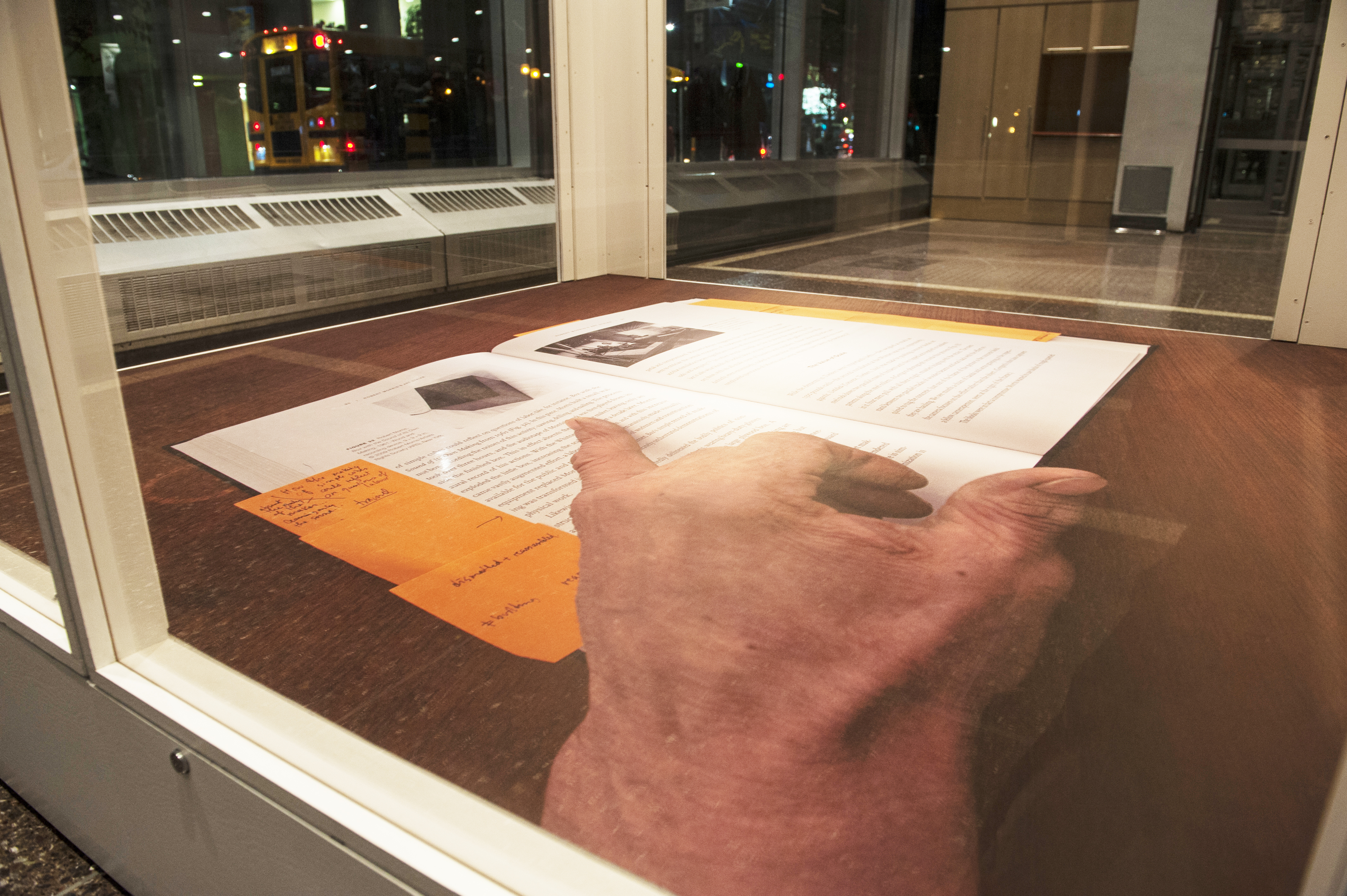Karine Savard’s installation is the first out of four labour-themed pieces this year
Local artist Karine Savard’s new installation is a stand-out piece in the Sightings program, also known as the giant white cube on the main floor of the Hall building. The program is, as the Leonard and Bina Ellen Art Gallery explains, an “experimental platform to critically reflect upon the possibilities and limitations of the modernist ‘white cube.’’’

Concordia’s white cube was first created by Paul Smith in 2012 to exhibit works by students of the Visual Arts department. In 2013, it was moved from the EV building to the Hall building and opened to professional artists. On average, the cube hosts four installations per year on varying themes. This year’s theme revolves around the presentation and notion of the labour process.
“I think it’s important that the object enters into a dialogue with the exhibition space,” said Savard, who chose to leave the cube as empty as possible by placing the print—the only physical component of her installation—on the floor to highlight the process over the product.
This two-page print is lifted from Art Workers: Radical Practice in the Vietnam War Era, a book which criticizes— Morris’ box and is written by Julia Bryan-Wilson. The print is surrounded by images of labourers’ hands and notes, recalling the notion of manual labour.
Robert Morris’s 1961 installation, Box with the Sound of Its own Making, served as an inspiration for Savard, who decided to occupy Concordia’s white cube in order to question long-established Western ideas of art and to acknowledge the different transformations that have occurred within our society. Morris inserted a recording of the sounds produced during the making of the wood box itself as a comment on the traditional capitalist system, which separates individuals from their actions and from the products of their work. Savard repeated and re-enacted the construction of Morris’ artwork and recorded it in order to create an installation of her own interpretation for a distinct, yet similar, result.
According to Leonard and Bina Ellen Art Gallery’s online exhibit overview, the installation aims “to reveal the staging and filming process inherent to artistic work.” A recorded dialogue of Savard with her father, a carpenter-joiner—a trade position that involves working with lighter, ornamental projects when joining wood—is featured with the cube allowing the viewer to learn about the aesthetic and technical procedures that went into the creation. These are steps that become just as important as the actual physical product. Through the dialogue, the artist is able to question some of the contemporary art world’s issues, like the division between manual and mental work, the concept of the separation of labour and the intervention of aesthetic judgements.
The soundtrack—which comes from a never-published video—was also a way for Savard to discuss the place of manual work and tools in artwork. She considers the installation a visual and sound illustration of a generational change within society. From her father’s manual expertise to her digital skills, when we asked her about her intentions she said that she wanted to raise the topic of the transformation of the industrial economy.
Savard has designed several film posters—such as Blue is the Warmest Colour and Incendies—and integrated this creative background into her work for the cube.
Moreover, similarly to Robert Morris: Recent Works, an exhibit at the Whitney Museum of American Art in 1970, the process of constructing the box was made open to the public as a way of questioning the traditional authority of fine art creators. Her project encourages reflection that is not solely based on the aesthetic dimensions but also pushes the viewers to question their ideas of art.
The Sightings program—a platform exploring the modernist “white cube”—of the Leonard & Bina Ellen Gallery welcomes the work Box with the Sound of Its Own Making, a project by artist and poster designer Karine Savard displayed from Sept. 23 to Jan. 10.



